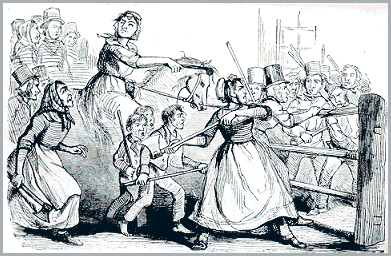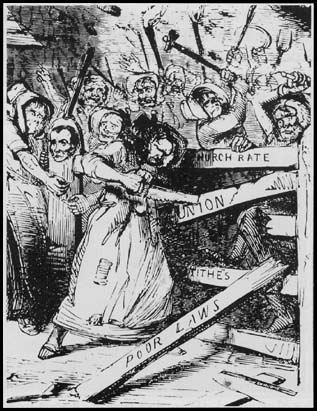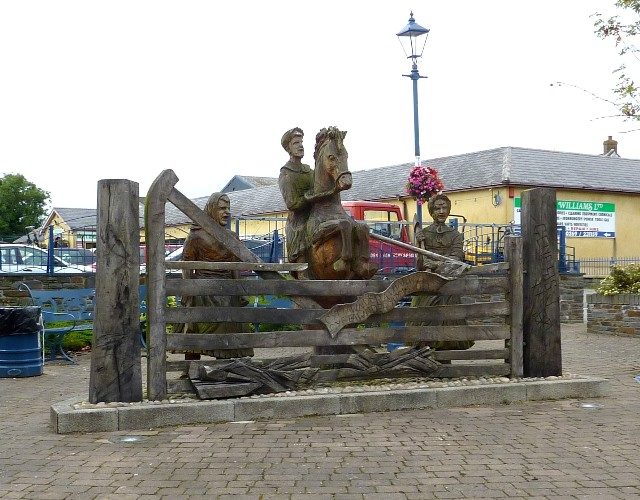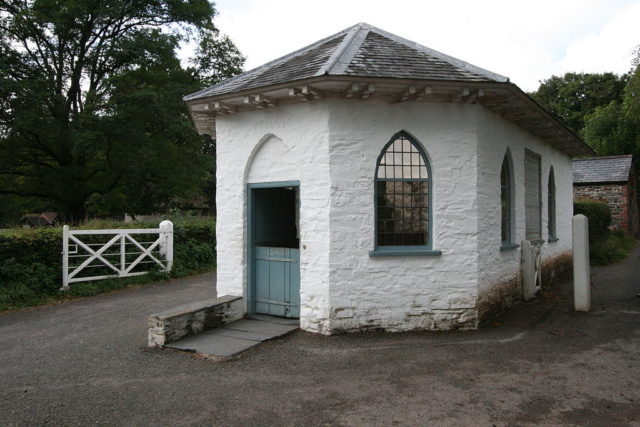In the period between 1839 and 1843, there were series of protests known as “The Rebecca Riots,” which took place in the rural areas of West Wales. The protests took place at a time of famine, poor harvests, and high, unjust taxes on top.
The farmers were furious for the treatment they got and took their actions against toll-gates as the proposed fees angered them most. During the protests, the men were dressed as women.

In the late 1830s, the life of the agricultural communities in the south of Wales was seriously worsened as their fields were damaged in atrocious seasons of rain, so the farmers were forced to buy the corn to feed themselves and consequently spent all their savings. The situation left the communities hungry and bankrupted, but instead of help by the authorities they were still required to pay taxes. What made the farmers furious were the toll-gates taxes.
During the first half of the 19-th century, it was Turnpike Trusts that owned most of the main roads in Wales. They operated the roads and charged fees for their use and the money were intended for the maintenance and improvement of the same roads.
But the main interest of the English businessmen who operated the trusts was to draw as much money as possible from the locals.

So in 1839, the people formed gangs and went destroying the tollgates. The men were dressed as women and became known as “Merched Beca,” Welsh for “Rebecca and her daughters.” It is said that the name was taken from a verse in the Bible, Genesis 24:60: “And they blessed Rebekah and said unto her, Thou art our sister, be thou the mother of thousands of millions, and let thy seed possess the gate of those which hate them”.

The people were attacking the toll-gates at night, always masked, with blackened faces and women clothes. During the first protests led by “Rebecca,” a huge name, named Thomas Rees destroyed the tollgates at Yr Efail Wen in Carmarthenshire.
And sometimes, a member of the protests would appear at the toll-gate as an old blind woman and say:”My children, something is in my way,” and then the others would show up and destroy the toll-gate.If the authorities replaced the toll-gates, the “Rebecca” would destroy them again. The riots continued for the next four years until 1844 when laws for control of the Turnpike Trusts were passed.

Even though the protests ended up without any immediate reforms, with the Turnpikes Act of 1844 the trusts were consolidated and the rates simplified, while the riots served as an inspiration for the future Welsh protests.
The tollgates were reintroduced in 1966 to collect tolls for crossing the Severn Road Bridge, only this time as a tax for the English when they were crossing into Wales. Since then, there is no charge in the other direction – when the Welsh cross into England.
